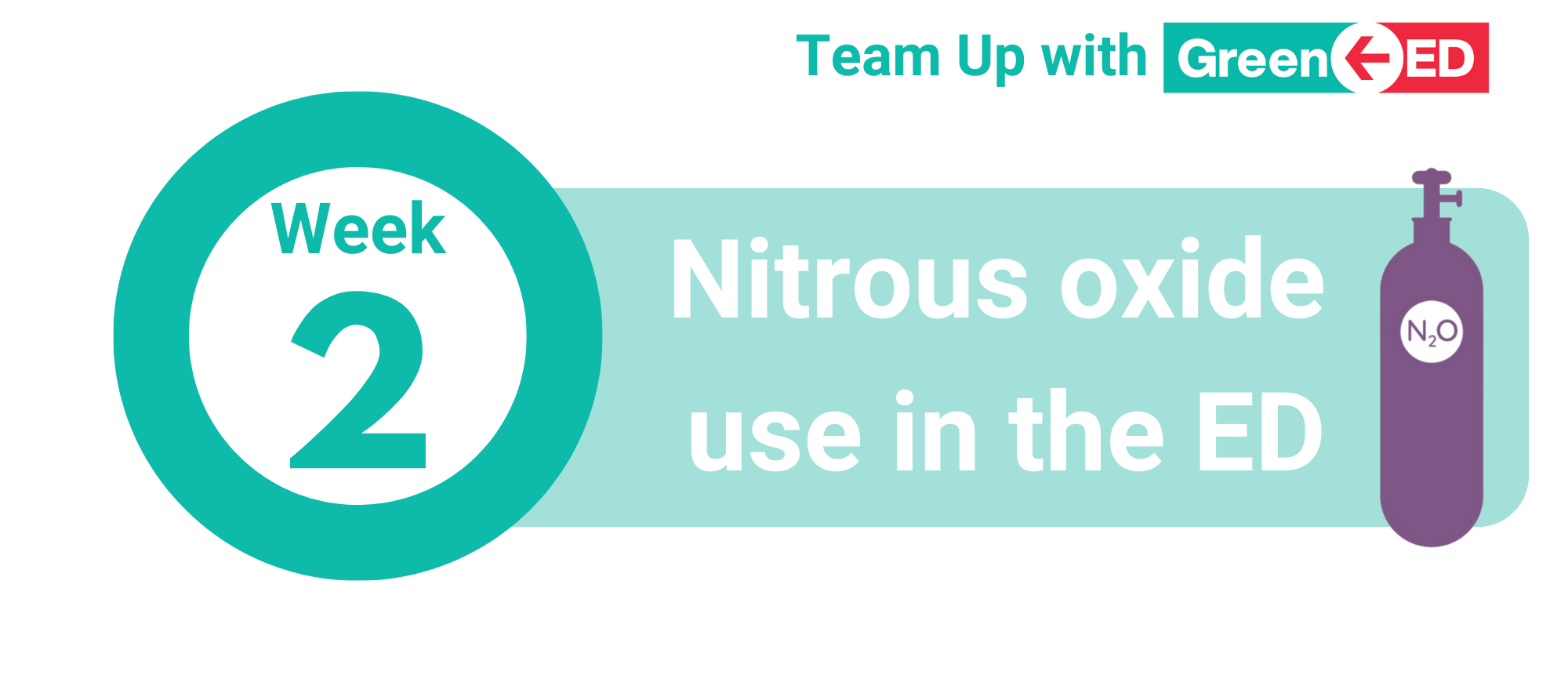
For Week 2 of the "Team Up with Green ED" campaign, we're focusing on nitrous oxide use in the ED.
Nitrous has a huge global warming potential, nearly 300x that of CO2.
This joint statement from RCEM, the college of Paramedics, Association of Ambulance Chief Executives and the British Association for Immediate Care provides baseline data and recommendations.
N2O accounts for up to 2% of the NHS carbon footprint, so the RCEM GreenED project emphasises reducing N2O in ED via 4 framework actions.
You can get more information at https://greened.rcem.ac.uk and sign up to access more resources and our nitrous carbon footprint calculator
Reducing N2O in ED will be a multi-step process requiring input from:
🌎ED medical and nursing leads
🌏Sustainability team
🌎Pharmacy
🌏Procurement
🌎Estates & Facilities
🌏Portering services
MDT is 🔑
A good starting point is to work out how much N20 the ED is using.
FYI a 500L cylinder = 139kg CO2e
✏️audit number/size of cylinders
✏️review px/sedation records
✏️survey staff
You can use the audit process as an opportunity to start the conversation about nitrous use in the ED.
So then how can we reduce nitrous use in the ED?
💡stop stockpiling cylinders til expired/sending back half used cylinders
💡address manifold leaks (up to 95% purchased N2O is lost)
💡switch to alternative analgesia
Lets think about switching to alternative analgesia first:
"No to N20" was an awareness campaign run as part of the GreenED pilot by Steve Fordham at Royal Devon and Exeter hospitals, aiming to prompt ED clinicians to consider alternative analgesia to Entonox.
This project ultimately reduced Entonox use by 1000L per week.
What are the alternatives to N2O in ED? They are many. You could consider immobilisation, methoxyflurane, po/im/in/iv/pr agents, nerve blocks, and LAT gel.
There is also an RCEMLearning blog available on pain management at
http://rcemlearning.co.uk/foamed/painful-to-think-about-assessment-and-…
Ultimately the patient comes first, and there will be times when nitrous is the most appropriate choice of analgesia, but it shouldn't be the default and alternatives should be considered
If you have to use nitrous, how can you reduce the impact as much as possible?
Many EDs use piped nitrous. The Nitrous Oxide Project found up to 95% of purchased N2O is lost in manifold leaks. Repairing manifolds or, even better, switching to prn cylinder supply can significantly reduce emissions and costs.
While a lot of the initial work focussed on anaesthetics and theatres, nitrous manifolds are prevalent in EDs and a significant source of carbon emissions.
https://sustainablehealthcare.org.uk/what-we-do/sustainable-specialties…
This GreenerNHS case study from East Lancashire Hospitals Trust demonstrates the huge impact that addressing manifold leaks can have
http://england.nhs.uk/north-west/greener-nhs/case-studies-greener-nhs/c…
Please log in or sign up to comment.